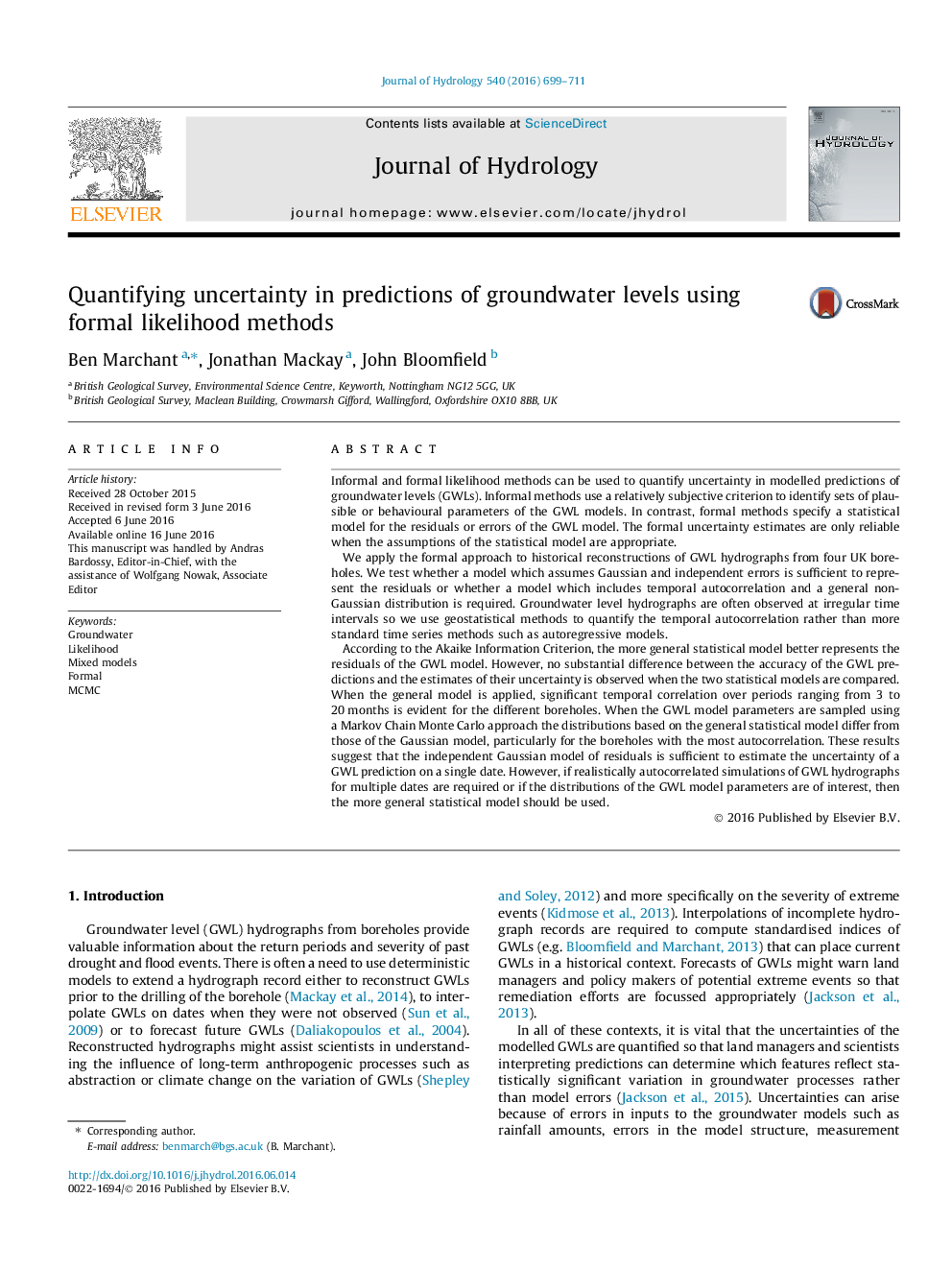| کد مقاله | کد نشریه | سال انتشار | مقاله انگلیسی | نسخه تمام متن |
|---|---|---|---|---|
| 6409572 | 1629912 | 2016 | 13 صفحه PDF | دانلود رایگان |

- Groundwater levels (GWLs) are modelled for 4 UK boreholes using the AquiMod.
- The uncertainties of GWL predictions are estimated using formal likelihood methods.
- General models of errors fit the data better than independent and Gaussian models.
- No substantial benefits of general error models are seen in validation results.
- General models are required to estimate correlation and parameter uncertainty.
Informal and formal likelihood methods can be used to quantify uncertainty in modelled predictions of groundwater levels (GWLs). Informal methods use a relatively subjective criterion to identify sets of plausible or behavioural parameters of the GWL models. In contrast, formal methods specify a statistical model for the residuals or errors of the GWL model. The formal uncertainty estimates are only reliable when the assumptions of the statistical model are appropriate.We apply the formal approach to historical reconstructions of GWL hydrographs from four UK boreholes. We test whether a model which assumes Gaussian and independent errors is sufficient to represent the residuals or whether a model which includes temporal autocorrelation and a general non-Gaussian distribution is required. Groundwater level hydrographs are often observed at irregular time intervals so we use geostatistical methods to quantify the temporal autocorrelation rather than more standard time series methods such as autoregressive models.According to the Akaike Information Criterion, the more general statistical model better represents the residuals of the GWL model. However, no substantial difference between the accuracy of the GWL predictions and the estimates of their uncertainty is observed when the two statistical models are compared. When the general model is applied, significant temporal correlation over periods ranging from 3 to 20Â months is evident for the different boreholes. When the GWL model parameters are sampled using a Markov Chain Monte Carlo approach the distributions based on the general statistical model differ from those of the Gaussian model, particularly for the boreholes with the most autocorrelation. These results suggest that the independent Gaussian model of residuals is sufficient to estimate the uncertainty of a GWL prediction on a single date. However, if realistically autocorrelated simulations of GWL hydrographs for multiple dates are required or if the distributions of the GWL model parameters are of interest, then the more general statistical model should be used.
Journal: Journal of Hydrology - Volume 540, September 2016, Pages 699-711